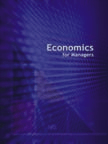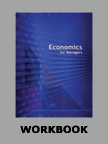Organizational Restructuring at AXA: Adopting (and Dropping) a New Business Model




|
|
ICMR HOME | Case Studies Collection
Case Details:
Case Code : BSTR079
Case Length : 18 Pages
Period : 1996-2006
Organization : AXA Organizational Restructuring
Pub Date : 2003
Teaching Note :Not Available
Countries : France
Industry : ---
To download Organizational Restructuring at AXA: Adopting (and Dropping) a New Business Model case study (Case Code: BSTR079) click on the button below, and select the case from the list of available cases:

Price:
For delivery in electronic format: Rs. 500;
For delivery through courier (within India): Rs. 500 + Rs. 25 for Shipping & Handling Charges
» Business Strategy Case Studies
» Business Strategy Short Case Studies
» View Detailed Pricing Info
» How To Order This Case
» Business Case Studies
» Case Studies by Area
» Case Studies by Industry
» Case Studies by Company
Please note:
This case study was compiled from published sources, and is intended to be used as a basis for class discussion. It is not intended to illustrate either effective or ineffective handling of a management situation. Nor is it a primary information source.
|
|
<< Previous
EXCERPTS
A Change in Business Philosophy
Since the mid-1980s, Axa had structured itself around various distribution channels from where it got its business. This was unlike most other insurance companies which were structured around the products and services they offered.
Axa realized that not all distribution channels were equally profitable and
hence, were required to be dealt with separately.
|
Therefore, the company established separate outfits for business that came through agents, brokers and direct marketing (Axa Assurance, Axa Courtage and Axa Conseil respectively). However, within this framework, Axa too sold its policies in an undifferentiated manner.
By the 1990s, as the competition intensified, it was becoming extremely difficult to hard sell commodity-like insurance products to customers. Moreover, as the insurance companies expanded their operations across the world, they found it difficult to put in place the elaborate marketing/distribution networks required by such a business model...
|
|
Reorganizing AXA - Phase I
While the above changes were largely influenced by external factors, the proposed organizational restructuring exercise received a major boost from an internal issue - the company's reinsurance business.
In 1996-97, Axa Re (the inward reinsurance division) contributed 3.2% of Axa's
total revenues.
|
|
With the strong financial backing of the parent company, Axa Re had reached 13th position in the list of top 25 reinsurance companies in 1999 (as per a survey of reinsurers ranked in terms of net premium written, conducted by rating agency Standard & Poor). Within France, Axa Re was the undisputed leader in this business.
Two other businesses connected to Axa Re also influenced the restructuring decision: Axa Global Risks (AGR), which underwrote large property and casualty insurance risks for the group across the world, and Axa Cessions, which was responsible for buying reinsurance for the entire Axa group from other reinsurance majors (outward reinsurance)... |
Excerpts Contd... >>
|
|



